Afghanistan - Endless Civil Wars Due To Communist Savagery
 |
Ninety-nine percent of the population of Afghanistan is Muslim. The country encountered Islam during the caliphate of Osman. It fell into the hands of the Samanids during the second half of the ninth century, then came to be ruled by the Ghaznavids in the tenth. Afghan territory was then occupied by India's Moguls, and then frequently changed hands until the beginning of the eighteenth century.
Nadir Shah, who ascended to the Iranian throne in 1736, added Afghanistan to his territories within a few years. After he was killed in an uprising, the state that he had established was quickly torn apart by internal conflict. Guard commander Ahmad Abdali was then chosen as shah by a number of tribes, and eventually managed to get the whole country to accept his rule under the name Ahmad Shah Durrani. His territories extended from Kashmir to Delhi and the Amu Darya (Oxus) River to Oman, and were so extensive that the Afghan Empire was the second-largest Islamic state in the world in the second half of the eighteenth century, after the Ottomans.
The empire did not last long though, and was soon drawn into a great civil war. British forces took advantage of the confusion to occupy Afghanistan. For a long time afterwards the country was unable to form a long-lasting government due to outside interventions by Britain and Russia, and suffered periodic internal conflicts. Muhammad Nadir Khan, who came to power in 1929, was able to provide a brief period of stability, yet Russia still continued to interfere in Afghanistan's internal affairs and tried to dominate the administrations that came to power. Their relationship was so close that Afghanistan was the first country to recognize Russia's communist Bolshevik regime.
In 1973, the Soviet Union brought about a coup in Afghanistan. The pro-Western Zahir Shah was overthrown and Daoud Khan (Muhammad Daoud) came to power in his place. After that, Marxist officials and officers began to be influential in the Afghan administration and were appointed to key posts. Daoud Khan wished to be free of Russian influence and to draw closer to Islamic nations. The agreements he reached with Pakistan caused the increasingly powerful domestic communist organizations to join forces. It was already clear that this policy of drawing closer to Islamic nations would provoke a Russian reaction. In 1978, Marxist generals in the army and a number of communist civilians staged a Russian-backed coup. All of Daoud Khan's family and close associates were slaughtered. The organizers of the coup announced that they would run the country with a communist regime, and they also began a fierce war against religion. The Black Book of Communism describes the communist regime's hatred of religion:
Shortly afterward the government began an antireligious crusade. The Koran was burned in public, and imams and other religious leaders were arrested and killed. On the night of 6 January 1979 all 130 men in the Mojaddedi clan, a leading Shiite group, were massacred. All religious practices were banned.51
The Afghan communists were purely and simply the hired tools of the Soviet Union. They operated in accordance with the directives of "advisors" from Moscow, and carried out massacres of their own people, as these figures showed them. In the short time they stayed in power they wreaked frightful terror:
[Afghanistan scholar] Michael Barry describes one such incident: "In March 1979… 1.700 adults and children, the entire male population of the village [of Kerala], were all assembled in the town square and machine-gunned at point-blank range. The dead and dying were thrown into three mass graves and buried with a bulldozer. For a while afterward the women could still see the earth move slightly as the wounded struggled to escape, but soon all movement stopped. All women fled to Pakistan…" At the same time, terror reigned in Kabul. The Pol-e-Charki prison, on the eastern outskirts of the city, became a concentration camp. As Sayyed Abdullah, the director of the prison, explained to the prisoners: "You're here to be turned into a heap of rubbish."52
 |
In his book Le Résistance Afghane (The Afghan Resistance), Michael Barry describes other brutal practices of the prison governor:
Torture was common; the worst form entailed live burial in the latrines. Hundreds of prisoners were killed every night, and the dead and dying were buried by bulldozers. Stalin's method of punishing entire ethnic groups for the actions of some of its members was adopted, leading to the arrest on 15 August 1979 of 300 people from the Hazaras ethnic group who were suspected of supporting the resistance. "One hundred fifty of them were buried alive by the bulldozers, and the rest were doused with gasoline and burned alive." In September 1979 the prison authorities admitted that 12.000 prisoners had been eliminated. The director of Pol-e-Charki told anyone who would listen: "We'll leave only 1 million Afghans alive – that's all we need to build socialism."53
All of these practices were directed from Moscow. In fact, all the in Afghanistan had been planned beforehand by the Soviet Union. The Soviet regime had decided to have the communists in Afghanistan stage a coup and then occupy the whole country under the pretext of defending that so-called "democratic" regime. As many historians now agree, it was the fact that the communists saw the rapid rise of Islam at the time as a threat which prompted Moscow to take those measures.
The Red Army remained in the country as an occupying power for exactly 10 years. It tried to put down the entirely justified resistance of the mujahadeen groups by employing the most ruthless and savage methods imaginable. One Afghan fighter describes the methods employed by the Red Army:
The Soviets attacked every single house, looting and raping the women. The barbarism was worse than instinctive, and appeared to have been planned. They know that in carrying out such acts they were destroying the very foundation of our society.54
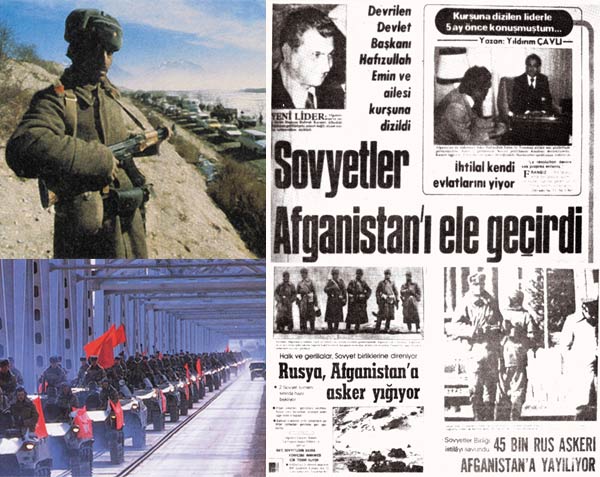 |
| The Red Army invaded Afghanistan in 1979, and remained in the country as an occupying force for a decade. For the people of Afghanistan, the occupation was synonymous with massacre, oppression, violence and torture. |
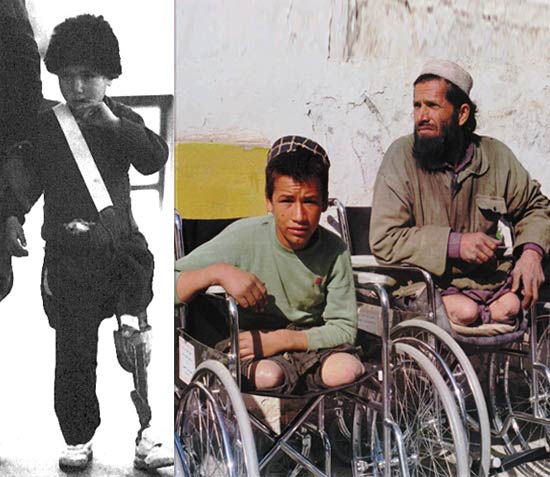 |
The Soviet Army used the most cowardly methods possible against the Muslim Afghans: mines were made in the shape of toys to encourage unwitting Afghan children to pick them up, captured guerrillas were horribly tortured, and civilians deliberately bombed. Instead of pursuing individuals one by one, they preferred to massacre entire villages at a time.
In an interview, Felix Ermacora, special rapporteur for Afghanistan for the U.N. Human Rights Commission, maintained that the United Nations was covering up the Russian savagery in Afghanistan. By referring to the Laghman massacre committed by the Russian administration, Ermacora stated that all the villages of this pretty city to the northeast of Kabul were wiped off the face of the map. Almost the entire population was wiped out. In the Karga district alone 1,500 people were killed, mainly women and children. All the animals there were killed too, right down to the dogs. All the houses were pillaged, and the tea and sugar stolen right out of the kitchens. Red Army soldiers drove over homes in their tanks, knowing full well there were women and children taking refuge within. Parts of bodies were visible between the tank tracks.55
Red Army Mines are Still Casualties |
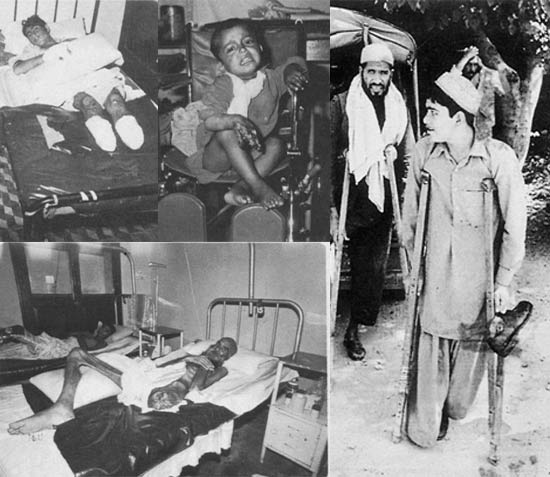 |
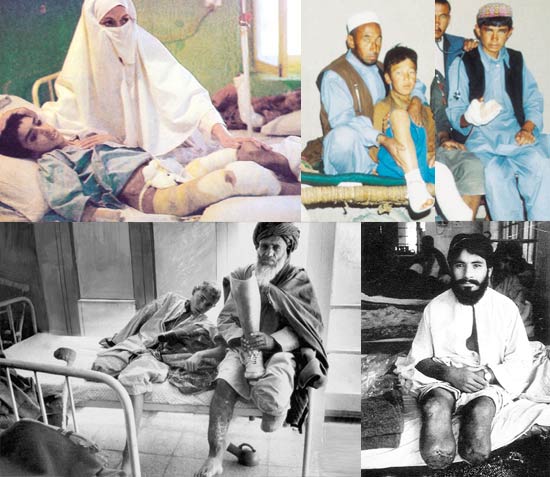 |
| As for those who reject Allah's Signs, and kill the Prophets without any right to do so, and kill those who command justice, give them news of a painful punishment. |
Finally, on Dec. 27, 1979, the Red Army used the resistance by the Muslim mujahadeen to the communist regime in Afghanistan as a pretext to occupy the country. The savagery meted out to the people of Afghanistan grew in scope still further.
Afghan Refugees |
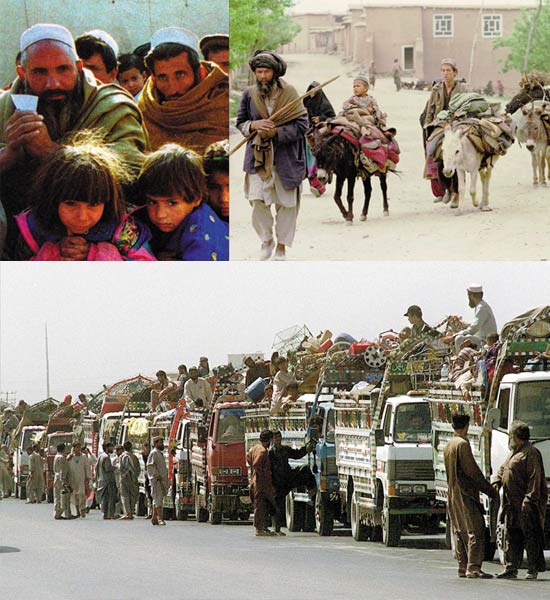 |
| 1979: A total of 600,000: 400,000 fled to Pakistan and 200,000 to Iran. |
The Legacy of Communist Savagery |
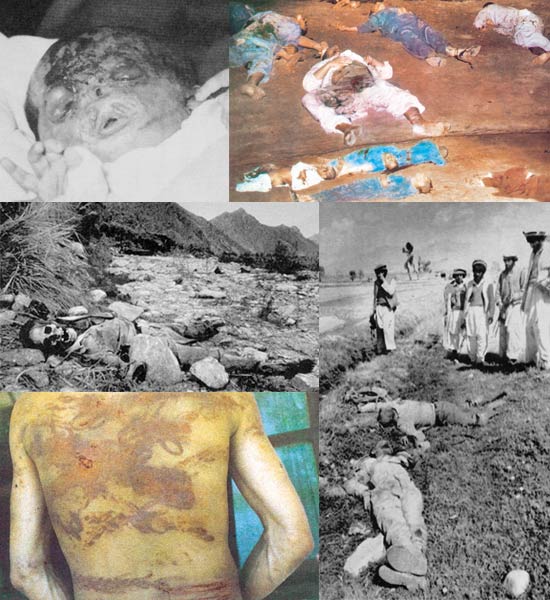 |
| Throughout the communist occupation, houses were plundered, women raped, and houses with children inside either burned or crushed by tanks. These are some images of those 10 years of occupation. |
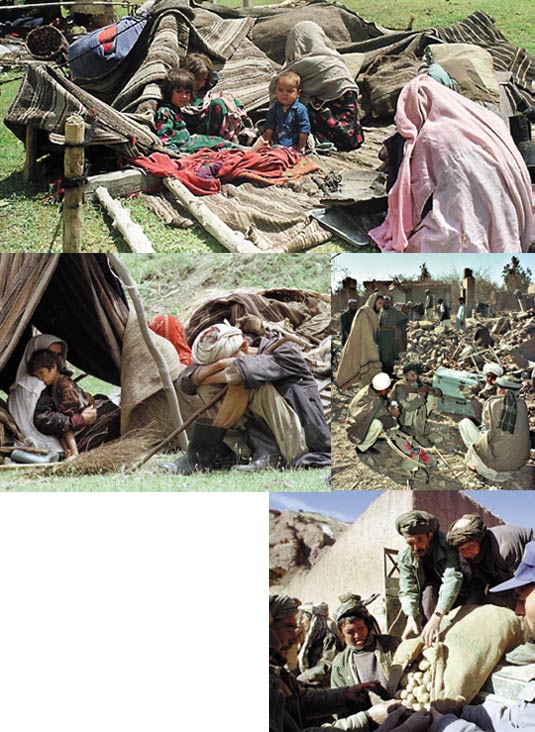 |
| The increasing violence in the wake of the Soviet occupation which began with Moscow's provocations in the 1970s inflicted terrible suffering on Afghanistan. The Taliban regime which took power in 1998 was unable to establish political order and social peace, and the internal conflict in the country increased. |
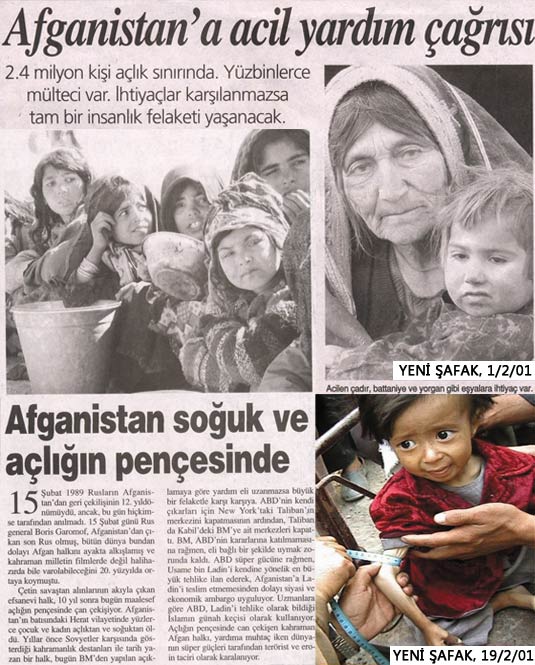 |
| "For the last two years the drought has left animals hungry and dried up rivers. People have used up their last remaining food reserves. According to humanitarian aid organizations more than 700,000 people – some 4% of the people of Afghanistan – have migrated in despair to the big cities and crossed the Iranian and Pakistani borders. More than 1 million people are battling against starvation. The Afghans have been at war for the last 24 years. Even when hunger has not been prevalent one out of every four children under the age of five dies and the average life expectancy is 44. When temperatures start to rise, the cold will give way to water and health problems. We will face cholera, tuberculosis and other such diseases." (Barry Bearak, Courrier International, 22.03.2001, No. 542) |
By the end of the decade-long Soviet occupation, tens of thousands of people had been killed, and as many again crippled. Afghanistan today imports more artificial limbs than any other country on earth. Red Army landmines robbed tens of thousands of Afghans of their arms and legs.
After the Soviets finally withdrew, Afghanistan collapsed into disorder and a bloody civil war began.
The Taliban administration which seized power in 1998 actually increased the social tension and poverty in the country by implementing a very strict regime. We hope that the new regime established after the collapse of the Taliban can put an end to the violence and poverty that rose to terrible heights with Moscow's provocations in the 1970s followed by the Soviet occupation.
Footnotes
51- Assem Akram, Histoire de la Guerre d'Afghanistan, p.516; S. Courtis, N. Werth, J. L. Panne, A. Paczkowski, K. Bartosek, J. L. Margolin, The Black Book of Communism, pp. 711-712 (emphasis added)
52- Michael Barry, La Resistance Afghane, du Grand Moghol à l'Invasion Soviétique, Paris, Flammarion, "Champs" , 1989, p. 314; S. Courtis, N. Werth, J. L. Panne, A. Paczkowski, K. Bartosek, J. L. Margolin, The Black Book of Communism, pp. 712-713 (emphasis added)
53- Michael Barry, La Résistance Afghane, du Grand Moghol à l'Invasion Soviétique, Paris, Flammarion, 1989 pp.306-307 (emphasis added)
54- S. Courtis, N. Werth, J. L. Panne, A. Paczkowski, K. Bartosek, J. L. Margolin, The Black Book of Communism, p. 719; Shah Bazgar Afghanistan, la résistance au coeur, pp. 101-102 (emphasis added)
55- Tarih ve Medeniyet (History and Civilization), December 1996, vol. 33, p. 18
- Foreword
- Introduction - A Call To All People of Conscience ...
- Danger Facing The Islamic World - The Anti-Islamic Alliance Facing Muslims
- Chechnya - Oppression as The Whole World Watches
- Kashmir - The Muslims of Kashmir are Waiting for Help
- East Turkestan - Savagery hidden by the communist Chinese Government
- Bosnia, Kosovo and Macedonia - The peoples of the Balkans dragged from one war to Another
- Algeria - The Bloody Toll of Endless Cruelty and Oppression
- Tunisia - A People Oppressed Solely for Their Faith
- Eritrea and Ethiopia - Muslims Want Peace and Security
- Chad - The Muslim country the colonialist French administration tried to destroy
- Somalia - A Poor Nation in the Midst of Civil Wars
- Djibouti - Oppression in Africa’s Smallest Country
- Sudan - A Country Trying To Escape Fighting and Civil War
- Uzbekistan - Former Communists Continue To Oppress Muslims
- Afghanistan - Endless Civil Wars Due To Communist Savagery
- Iraq - Middle East Fascism: Saddam Hussein
- Syria - The History of Terrible Oppression Hidden from The World
- The Oppression of Muslim Minorities - Muslims Trying To Live By Their Religion
- Conclusion
